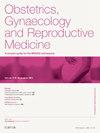Modern approaches to surgical treatment for female stress urinary incontinence
Q3 Medicine
Obstetrics, Gynaecology and Reproductive Medicine
Pub Date : 2025-04-01
DOI:10.1016/j.ogrm.2025.01.001
引用次数: 0
Abstract
Stress urinary incontinence (SUI) is a prevalent condition, affecting a significant proportion of women, with 13.6% requiring surgical intervention during their lifetime. Surgical treatments primarily aim to provide suburethral support or enhance urethral closure mechanisms. Traditionally, colposuspensions and autologous rectus fascial slings have been considered effective first-line surgical options for managing SUI. These procedures have shown reliable outcomes in terms of symptom relief and long-term efficacy. The use of midurethral tapes, once the most popular treatment option in the UK, is currently suspended due to the concerns about the risk of chronic pelvic pain and vaginal mesh exposure. It remains an option for women with deemed ‘exceptional circumstances’ and may be cautiously reintroduced into practice with certain prerequisites. The mesh ‘pause’ has driven a much-improved process of patient counselling, expectation setting, utilizsation of the ‘MDT’, enhanced surgical standards and data collection. It has led to a reassessment of surgical approaches. The current trend is for many women to request intra-urethral bulking (Bladder neck injection) as a first line procedure to treat primary SUI. There is a renewed focus on established methods like colposuspension, open or laparoscopic, and modified autologous fascial ‘sling on a string’. These procedures avoid mesh related risks but are associated with different risks such as new onset vaginal prolapse and post-operative voiding difficulty, respectively.
女性压力性尿失禁手术治疗的现代方法
压力性尿失禁(SUI)是一种常见的疾病,影响了很大一部分女性,13.6%的女性一生中需要手术干预。手术治疗的主要目的是提供尿道下支持或增强尿道关闭机制。传统上,阴道悬吊和自体直肌筋膜吊带被认为是治疗SUI的有效一线手术选择。这些方法在症状缓解和长期疗效方面显示出可靠的结果。使用尿道中带,曾经是英国最流行的治疗选择,目前由于担心慢性盆腔疼痛和阴道网暴露的风险而暂停使用。对于被认为是“特殊情况”的女性来说,这仍然是一个选择,在某些先决条件下,可能会谨慎地重新引入实践。网状物的“暂停”大大改善了患者咨询、期望设定、“MDT”的利用、提高了手术标准和数据收集的过程。这导致了对手术入路的重新评估。目前的趋势是许多女性要求尿道内填充(膀胱颈部注射)作为治疗原发性SUI的一线手术。人们重新关注已建立的方法,如阴道悬吊,开放或腹腔镜,以及改良的自体筋膜“绳子吊索”。这些手术避免了与补片相关的风险,但分别与新发阴道脱垂和术后排尿困难等不同风险相关。
本文章由计算机程序翻译,如有差异,请以英文原文为准。
求助全文
约1分钟内获得全文
求助全文
来源期刊

Obstetrics, Gynaecology and Reproductive Medicine
Medicine-Obstetrics and Gynecology
CiteScore
0.90
自引率
0.00%
发文量
67
期刊介绍:
Obstetrics, Gynaecology and Reproductive Medicine is an authoritative and comprehensive resource that provides all obstetricians, gynaecologists and specialists in reproductive medicine with up-to-date reviews on all aspects of obstetrics and gynaecology. Over a 3-year cycle of 36 issues, the emphasis of the journal is on the clear and concise presentation of information of direct clinical relevance to specialists in the field and candidates studying for MRCOG Part II. Each issue contains review articles on obstetric and gynaecological topics. The journal is invaluable for obstetricians, gynaecologists and reproductive medicine specialists, in their role as trainers of MRCOG candidates and in keeping up to date across the broad span of the subject area.
 求助内容:
求助内容: 应助结果提醒方式:
应助结果提醒方式:


